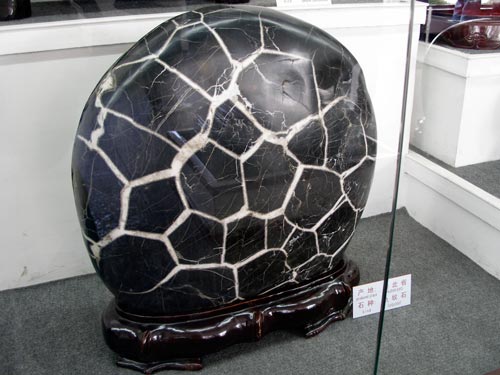
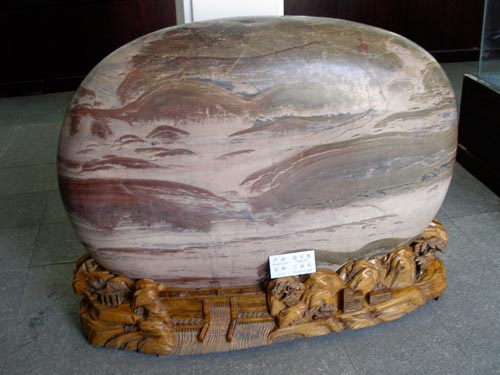
This Yangtze River Stone looks more like a work of art than just simple river-polished sandstone.
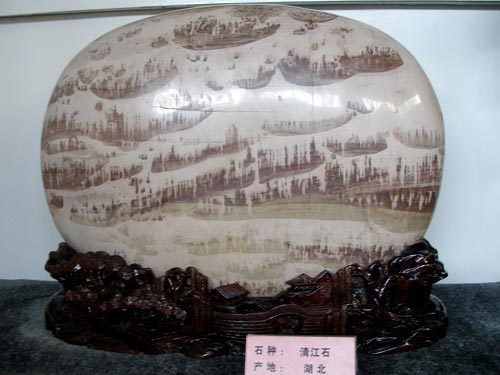
Another Yangtze River Stone
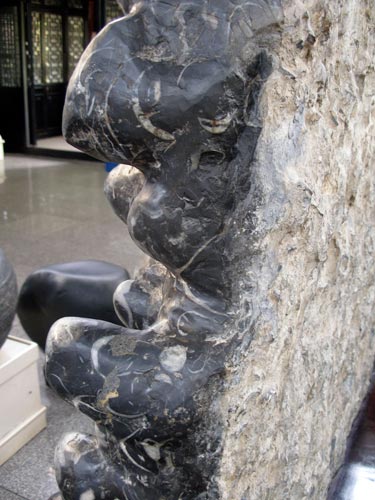
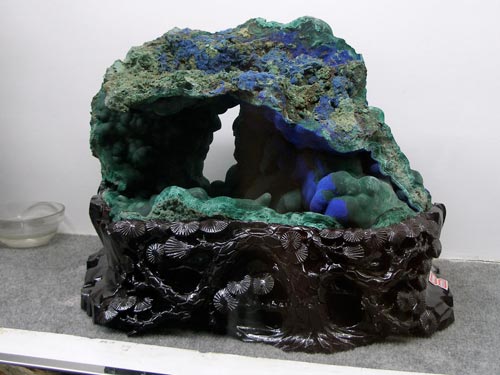
A lovely piece of green Malachite with some blue Azurite

This piece is labelled as "Bamboo Stone"
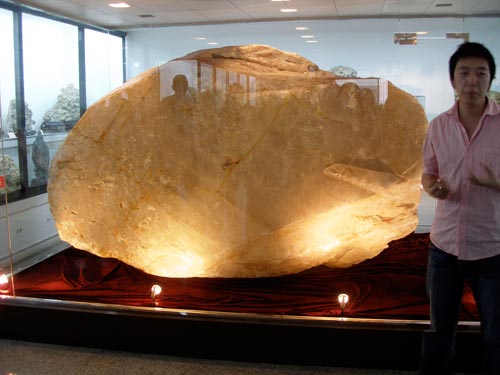
Michael, our museum guide, stands next to the largest crystal in China, which weighs 11.3 tons. The building was actually built around it because it would have been too big to get through a normal-sized door.
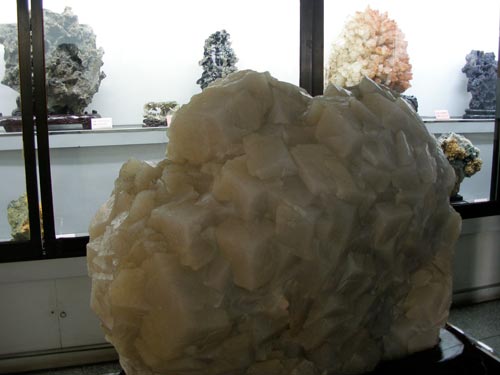
Calcite is a very soft stone.
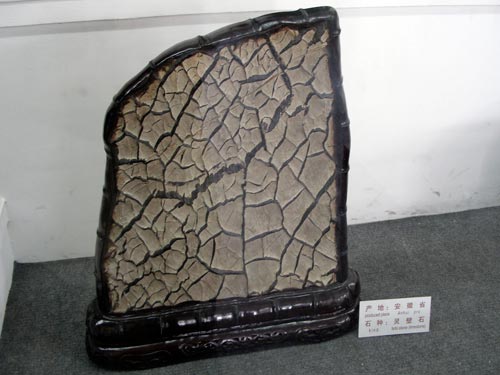
The main composition of Lingbi stones is limestone. Lingbi stones, found in the mountain areas of Lingbi county in Anhui province, were the most valued stones during the Song dynasty (960 - 1279). They are known for their hardness and dense textures that produce a light chime sound when tapped, hence they are also named resonant or chime rocks (bayinshi).
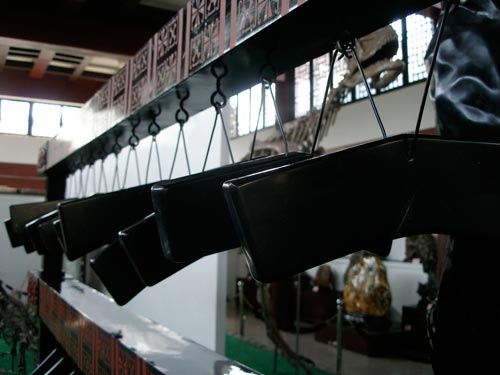
A set of chime rocks (or sonorous stones)
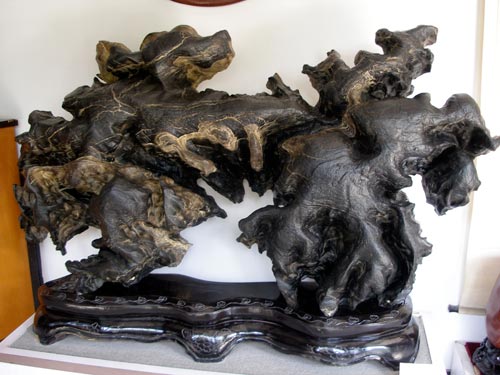
Scholar's rock or Gongshi. These stones of complex shapes have been collected and displayed in China for over 2,000 years. The strange shapes are believed to help in meditation and focussing the mind.

A meteorite is a natural object originating in outer space that survives an impact with the Earth's surface.

